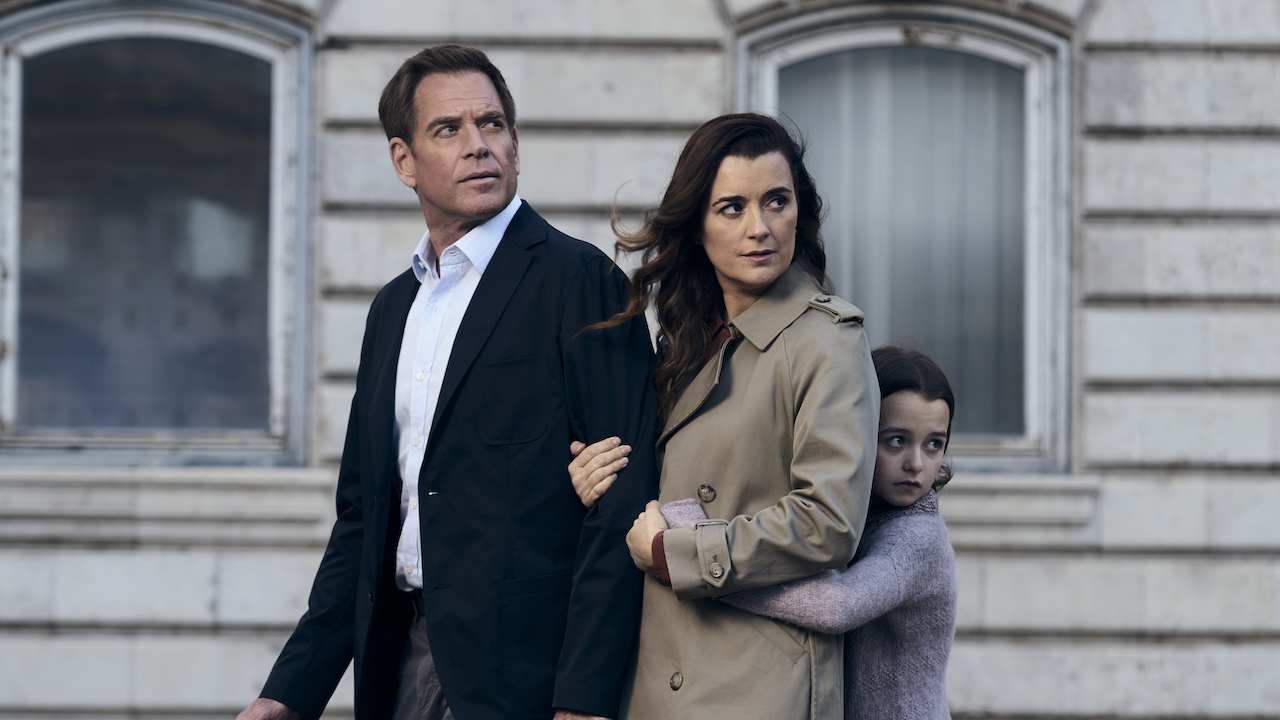Happy Feet Two Director George Miller Talks About Getting The Cast Together
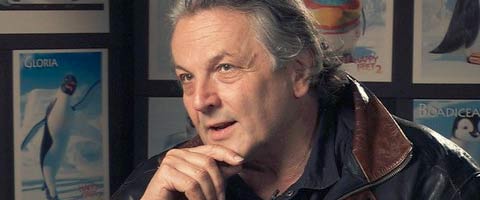
When animating films, director George Miller doesn’t go the standard route. Instead of having each individual actor come in for their own recording session one at a time, Miller brings all of his performers together and has them perform their conversations not with him, but with the other performers. But why do it that way? What doesn’t everyone do it? I ask George Miller that very question in our one-on-one interview.
Read our full conversation below, in which the filmmaker talks about not only the voice-performances, but the technology, creation of new characters, and the difference between live-action and the animated world.
I'm curious, was the sequel to the first Happy Feet- was that something that you always were planning to do? Or was there any hesitation before tackling the project?
I certainly didn't always plan to do it, but these stories take a long time to make. In the last year of the first Happy Feet, this story started to emerge. I began to see what we can do with the characters when they were emerging very strongly. It takes a while to get it- unlike live action, where you can see the character in the form of the actor and make up a world very very quickly, immediately. When you're doing animation it takes a while to see them. So once I began to see the world and the characters emerge, it was very hard not to speculate about the things we can do, what might happen to the characters. So pretty well, by the time I finished the first Happy Feet, I had a pretty good story in my mind about the second one.
Sure. And I'm curious also- the film, it does introduce a bunch of new characters. But the new ones that I really love are Will and Bill the krill, which are just absolutely fantastic. And I'm curious- how did you first develop them?
Well... do you need long answers or short answers?
If you want to talk, feel free to talk. [laughs]
Your Daily Blend of Entertainment News
Alright, ok Eric. I think the first thing is towards the first film, I began to see the potential of the technology. And there were a lot of things I wished we could do, but we weren't able to do. So that's where that thing started, on a technical level, that attracted me to do the second one. When you look at the two films, the first ones a saga- it follows the character from his birth to young adulthood. And there's several years, several human years, depending on what you want to call them. In the case of this film, it happens over a few days. So to get the sense of the epic down to the little microscopic, almost microscopic, characters from whose point of view the world of Antarctica would be a vast universe. So that's one of the things that led to them. And I knew that they would be very interesting characters to animate. The big eyes and basically pin-legs and feelers, they're transparent, they're bioluminescent. The have these massive spores in which they clutter around all the other krill each of them identical to each other. And it was sort of an interesting... I guess a metaphor to each individual in the mass of mankind. And they were very attractive to animate, because you have so much to work with.
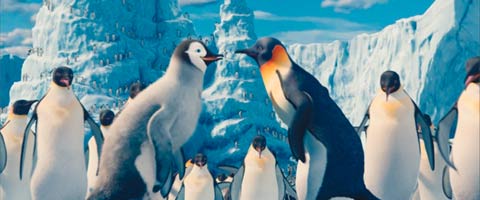
Sure. And also just kind of bridging off of that- this movie does have some pretty big issues, and that is most definitely one of them. And I'm curious, when you're in the writing process, with your cowriters, are you trying to strike a balance between appealing to both younger and older audiences?
Yes. Y'know, stories are in the eyes of the beholder, so every one of us takes something different from each story. It's very much the case that stories mean different things to different people. So an adult will take things quite different from a child, even though they do share things in common. I think if you're a parent that goes, you're going to see a little bit more from the parent, Mumble's, point of view. And you'll be able to recognize how you might have been as a child, y'know, Erik's point of view. I think if you're a child you're really going to see it from Erik's point of view, because you haven't had the opportunity to be a parent. So all of that is part of the process. But to be honest, we aren't checking boxes saying, “We covered that, we covered the kids, we covered the grandmas, we covered the teenage boys,” and so on. You simply tell the story according to your best instincts. And finding where the really interesting stuff is... and you try to make it one creamy ride. You're trying to carry the audience on a wagon of experience, and you bring to bear all the tools that you have. All the tools and working to the best of your ability to give that audience the best experience. So that's a bit of an elaborate answer- [laughs] -but there's no, like, let's include this and let's include that. If you follow that. And I think the really enduring stories, the really effective stories, don't shy away from complex ideas. I mean, my favorite film as a child that really struck me was Pinocchio.
Absolutely.
There's some incredibly complex ideas there. That conscience, y'know? It's embodied in Jiminy Cricket, but what an amazing idea that a lonely old man is so yearning to have a child that he builds himself a little wooden boy. And then the little cricket comes along as his conscience. I mean, it was the first time as a kid that I was even aware of the notion of right and wrong. And then when Pinocchio goes off and smokes too much and plays too much pool, and starts growing ears and braying like a mule, it was an amazing lesson in how to behave. And how he had to redeem himself by saving his father from the belly of a whale, it's incredibly epic and biblical and mythological. And all that embodied in these iconic characters- that's not a trivial little story there. It's tremendously resonant. I think that that applies to all the great stories that people seem to endure, from the nursery rhymes to the fairytales, to the classic literature.
And just to talk a little bit about the behind the scenes recording sessions- I know that most animated films are made with actors filming in individual recording sessions, but that wasn't the case with this film. And I'm curious, why did you decide to record with the actors all in the same session?
Because acting is a contact sport. It's what happens between the actors and the characters that really we're interested in. And also actors- the really good actors- are intensely collaborative. As Robin Williams called it, it's like lads ripping off each other in the way that jazz musicians do. And it just makes a lot more sense. Y'know, you have, say, Robin doing a love scene with Sofia Vergara, it's going to be a lot more interesting if you put them on the same mic next to each other. There's little nuances that you might not get if Robin does it here in a burg, looking and reading from a paper. And so even with the krill, I knew we needed two actors who were already friends that worked with each other. Brad and Matt Damon were that and were available at the right time at the right place. So we put them in the same room facing each other with the mics, so they could look into each other’s' eyes and interact. And the results are just much more interesting. So I just can't imagine doing it the other way.
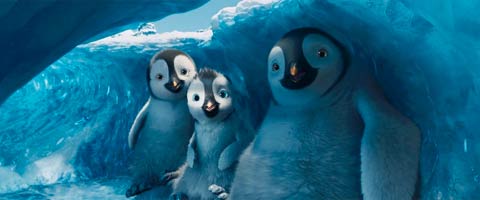
Are there any disadvantages to doing it that way? Because I'm always wondering why more animated films don't do that.
The biggest disadvantage is that it's very difficult on the sound guy, because you get overlapping. That's one of the main reasons. And the other one is the availability that you have to work out with scheduling.
Sure.
The scheduling is one of the reasons why.
That makes sense. And you just mentioned that you wanted actors to play Will and Bill that were friends previously. When you were writing the script, for the new characters, did you have actors in mind?
No.
No?
No, we just wrote them. Yeah, no, we didn't at that point.
Ok. I'm also wondering if- this movie, unlike the first one, is in 3D. How much did that change the process? Or did it change the process significantly from the first film?
It didn't interestingly enough, a few reasons why. The first film, we rendered three scenes in 3D, but they looked amazing, particularly the landscape and the creatures themselves, they were much more palpable. I just certainly love it and I've always wanted to make a 3D movie. And we weren't able to do it with the first one, so the second one we went in from the get-go. And we had a really good stereography team. It's also because of the way I shoot, I tend to shoot along the with the z axis, out of the screen and to move the camera a lot. And I use wide angle lenses, which is, like, classic for 3D. It was my 2D attempt to make the world seem three-dimensional anyways. So it naturally lends itself. And plus, the world is so spectacular, the vastness of the landscape. And as I said, the characters, when you connect the particularly characters like Will and Bill or Sven, who flies around in 3D- it's just wonderful for all that stuff.
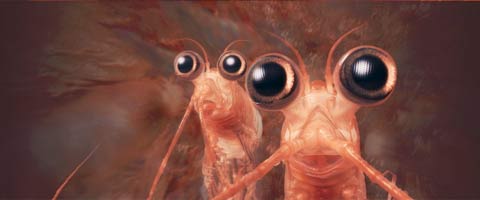
The film itself is so absolutely beautiful, and it really is a technical marvel. I guess, what was the biggest difficulty in making this film?
I'd say, well... the good bit of difficulty, I think of every film, is how do you get the story right. I think that's one of the reasons I'm attracted to animation. I think there's a, it's a narrative freshness, and you can- the film slowly emerges like a painting. You keep painting it over and over and over, until it's finer and finer. And I think it's a reason why Pixar make the best original stories for almost two decades now. Their storytelling is able to refine as you go. You start off with a kid's thing and then you keep refining and refining it.
Sorry, I'm kind of off the point. You were asking- so the storytelling is the big challenge. But on the other side, it's the rendering. Because we were much more detailed, because you go into the krill, which are transparent, because you see crystals of ice in which you can see reflections of everything around them. And, believe it or not, it took me a long time to figure this out- when the camera's really low to the ground, the computer is trying to figure out what it's meant to see. And when it renders, some of the frames would take up to a week to render-
Oh my god.
So we pushed the technology to its bleeding edge. We about ten times the grunt than we had on the first film, and even then we kept on saying, “Enough, enough!” So it was technologically pushing it to the limits. That shot when the krill encounter the whale, we had to back off a little bit, because there was too many krill, too much for the computers to handle it. Those shots would still be rendering now. [laughs] Y'know, we had to finish the film.
Not till 2013. [laughs] Another thing that I am curious about- you obviously have a vast experience in live action film and now animated film as well. And I'm curious, does your approach change when you’re dealing with live action versus animation? Or does it stay constant?
That's interesting... essentially it stays the same, except the one big difference is that animation is, like, at a glacial pace. It's like slow motion live-action. I mean, obviously you do the voices at one point, and then the bodies, and then the faces, and then you light them, and then you do the blocking- everything happens at a different point as compared to live action. But having said that, when I talk to the animators it's exactly the same conversation that I've had with the actors. They clearly work off the back of what the voice actors have done, but it's the same thing I'm talking about: what the characters want, or what they're feeling, and the dynamics between characters and so on. And only then will I actually... they're kind of slow motion actors in their own way, animators. They start talking about the little granular that people left in the frame earlier, when the feet, when they hit the ground. But essentially it's the same kind of process. Obviously there are technical issues, but essentially it's the same process. At least for me.
Right. And I mean, just to talk about that slower pace and the importance of story- is it a challenge to keep the story together when you're developing the film frame by frame by frame?
It is, and you use also some techniques to keep your objectivity. Because you can get so caught in the detail, you've got to have the ability to spring out of it and look at it from the big picture. And one of the big things for me is being able to work on another big project like Mad Max, which is such a different universe, and I'm able to back into Happy Feet. I might spend the morning working on the screenplay or designing Mad Max, and then I get back into Happy Feet. And clearly Happy Feet, I'm looking at it as if I'm doing it for the first time. And that helps. And when I finished with Mad Max, I wrote two other screenplays. So purely for that reason.

Eric Eisenberg is the Assistant Managing Editor at CinemaBlend. After graduating Boston University and earning a bachelor’s degree in journalism, he took a part-time job as a staff writer for CinemaBlend, and after six months was offered the opportunity to move to Los Angeles and take on a newly created West Coast Editor position. Over a decade later, he's continuing to advance his interests and expertise. In addition to conducting filmmaker interviews and contributing to the news and feature content of the site, Eric also oversees the Movie Reviews section, writes the the weekend box office report (published Sundays), and is the site's resident Stephen King expert. He has two King-related columns.
